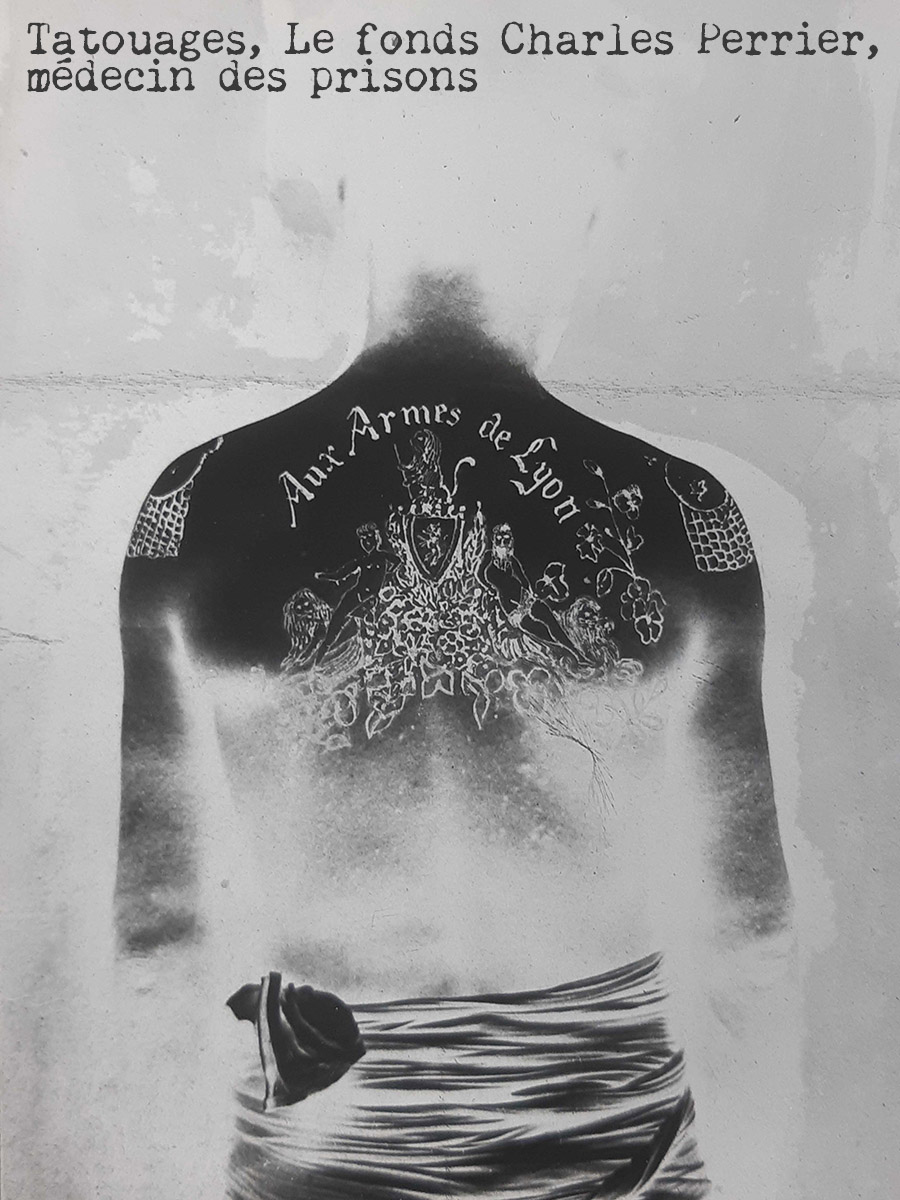
The exhibition Tatouages, Le fonds Charles Perrier, médecin des prisons at the Musée du Vieux Nîmes, in the South of France, shows until October 27th a portion of the photographic collection given by doctor Charles Perrier in which images of tattooed prisoners gives us an insight of the perception of tattooing in the late 19th century.


Doctor at the Maison centrale de Nîmes, Charles Perrier takes advantage of his position at the infirmary to study the prisoners. He’s interested in their detention, their health, make some list, collect informations (nationality, profession, etc.) From 1895, he concentrates on tattoos, that he recorded thanks to photographs, drawings, notes and statistics. Why so much interest in something that he will describe in one of his publications as a « ridiculous practice »? At the time, there was a specific interest in tattooing among the scientific community. One of the idea developed by some European researchers (and specifically the Italian criminologist Cesare Lumbroso) was : the natural born killer, saying that people were genetically born criminals. And among these individuals, tattoos were an undeniable characteristic of that identity. Perrier probably adopted the trend. Perrier will publish this study in 1897 in the book : Du tatouage chez les criminels.


Among the prisoners in the Maison centrale of Nîmes, composed of 859 inmates, Perrier notes that 346 of them arrived tattooed.They are educated and coming from any kind of environment, even mostly from a modest background though : cooks, bakers, workers, shoemakers, farmers, day laborers, masons, salesmen, bank employees,… would be tattooed on the head, the neck, chest, hands, back, etc. Motifs were essentially patriotic, political, religious, erotic or fantaisists and depicted as numbers, women, flowers, ships, hearts, daggers, stars, crosses… There are even some mentions of professional tattooers already, who would be active in bars, popular celebrations, etc. But even though the electric machine exists after O'Reilly first patent in 1891, there is no mention related to it, tattooers working still with a very rustic and rudimentary hand-technique, consisting basically of needles in a cork dipped in indian ink.

About tattooing done in prison, Perrier will not make any mention of it. Nor will he evoke the health conditions and the consequences on the inmates. Though, he has noticed people leave the prison with more tattoos than when they arrived. As a good statistician and scientist, Perrier will focus on the writing of his book Les criminels (1900). In this statistic album, he compiles the result on the inmates population. A massive book, but also a beautful object, decorated with splendid motifs done by some of the inmates, which artistic skills Perrier will have not miss to notice and that he will use for his own posterity. - Tatouages- Le fonds Charles Perrier, médecin des prisons at the Musée du Vieux Nîmes, https://www.nimes.fr






























